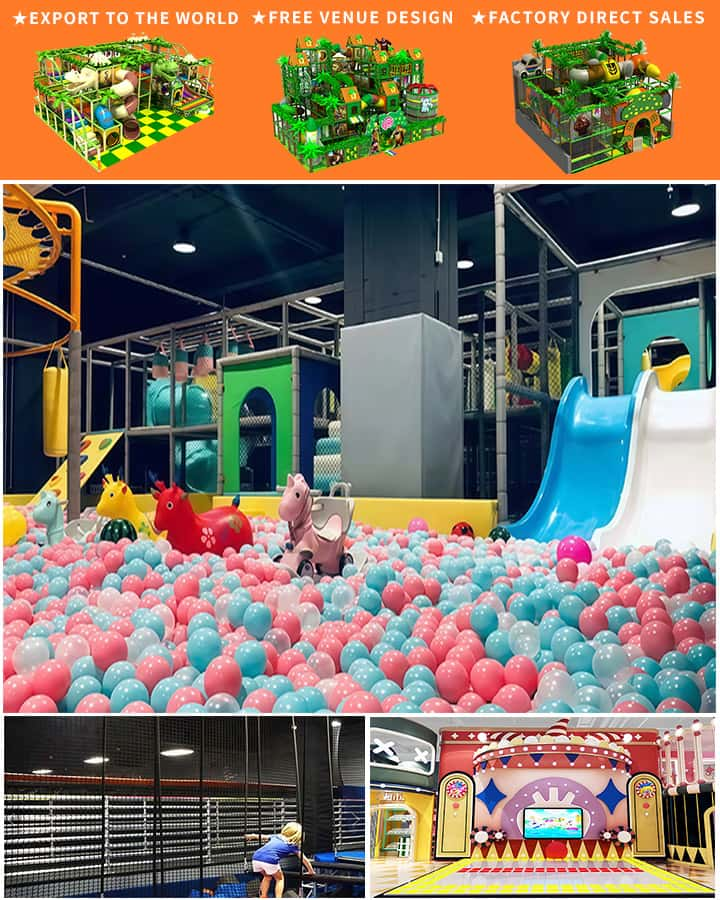Opening an indoor playground can be a highly rewarding business venture, providing children with a safe and entertaining environment while generating substantial revenue. However, one of the foremost considerations for any prospective entrepreneur is understanding the cost involved in setting up an indoor playground. This includes initial investments, ongoing expenses, and potential returns on investment. Here’s a detailed breakdown of the various costs associated with starting and running an indoor playground.
Initial Setup Costs
1. Location and Rent
The location of your indoor playground is crucial. Prime locations such as shopping malls, community centers, or family-oriented neighborhoods can drive higher traffic but come at a premium price. Monthly rent costs can range from \(2,000 to \)10,000 or more, depending on the location and size of the space.
2. Building and Renovation
Depending on whether you’re leasing an existing space or building from scratch, renovation and setup costs can vary significantly. Constructing custom play structures, safety mats, and other essentials might require professional services. Budget anywhere from \(50,000 to \)200,000 for construction and renovation.
3. Equipment and Furniture
The heart of your indoor playground will be its equipment. High-quality climbing structures, slides, ball pits, trampolines, and interactive games can cost between \(30,000 and \)150,000. Additionally, you’ll need seating, tables, storage units, and a point-of-sale system, which could add another \(10,000 to \)20,000 to your budget.
4. Licensing and Permits
Don’t forget to account for legalities. Obtaining necessary permits, licenses, and insurance can cost between \(5,000 and \)15,000. These are essential for ensuring compliance with local regulations and protecting your business against liabilities.

Ongoing Expenses
1. Utilities and Maintenance
Monthly utilities (electricity, water, gas) for an indoor playground typically range from \(500 to \)2,000. Routine maintenance of equipment and facilities may cost another \(500 to \)2,000 per month. Regular inspections and repairs help keep the playground safe and operational.
2. Staff Salaries
Hiring friendly and responsible staff is critical for the smooth operation of your playground. Salaries for part-time employees could amount to around \(3,000 to \)6,000 per month, whereas full-time staff might set you back \(20,000 to \)40,000 annually per employee.
3. Marketing and Promotions
To attract customers, you’ll need to invest in marketing activities. Costs for branding, advertising, promotions, and loyalty programs could range from \(500 to \)2,000 monthly, especially during peak seasons.
4. Inventory and Supplies
Stocking up on essential supplies like cleaning products, first aid kits, party supplies, and concessions adds to the recurring expenses. Allocate a budget of \(1,000 to \)3,000 per month for maintaining inventory.
Potential Revenue Streams
1. Entrance Fees
Charging admission fees based on duration (hourly, daily, or monthly passes) is the primary revenue source. Prices can vary by location and amenities offered but generally range from \(8 to \)25 per child per hour.
2. Parties and Events
Hosting birthday parties and special events can be a lucrative addition. Charging between \(200 and \)500 for exclusive use of the facility for a few hours can bring in substantial income.
3. Concessions and Merchandise
Selling snacks, beverages, and branded merchandise can further enhance your profitability. Estimate additional revenue of \(500 to \)2,000 per month from these sales.
Return on Investment (ROI)
Calculating the ROI involves considering both initial and ongoing costs in relation to expected revenues. A well-planned indoor playground can break even within one to three years, with profits thereafter depending on management efficiency and market conditions. The key to success lies in meticulous planning, effective cost management, and consistent customer engagement.
Conclusion
Establishing an indoor playground requires a significant initial investment and careful management of ongoing expenses. By thoroughly researching costs associated with location, equipment, staff, and other operational aspects, you can develop a realistic financial plan. With strategic investment and efficient operations, an indoor playground can become a profitable and enjoyable venture for both business owners and their young clientele




